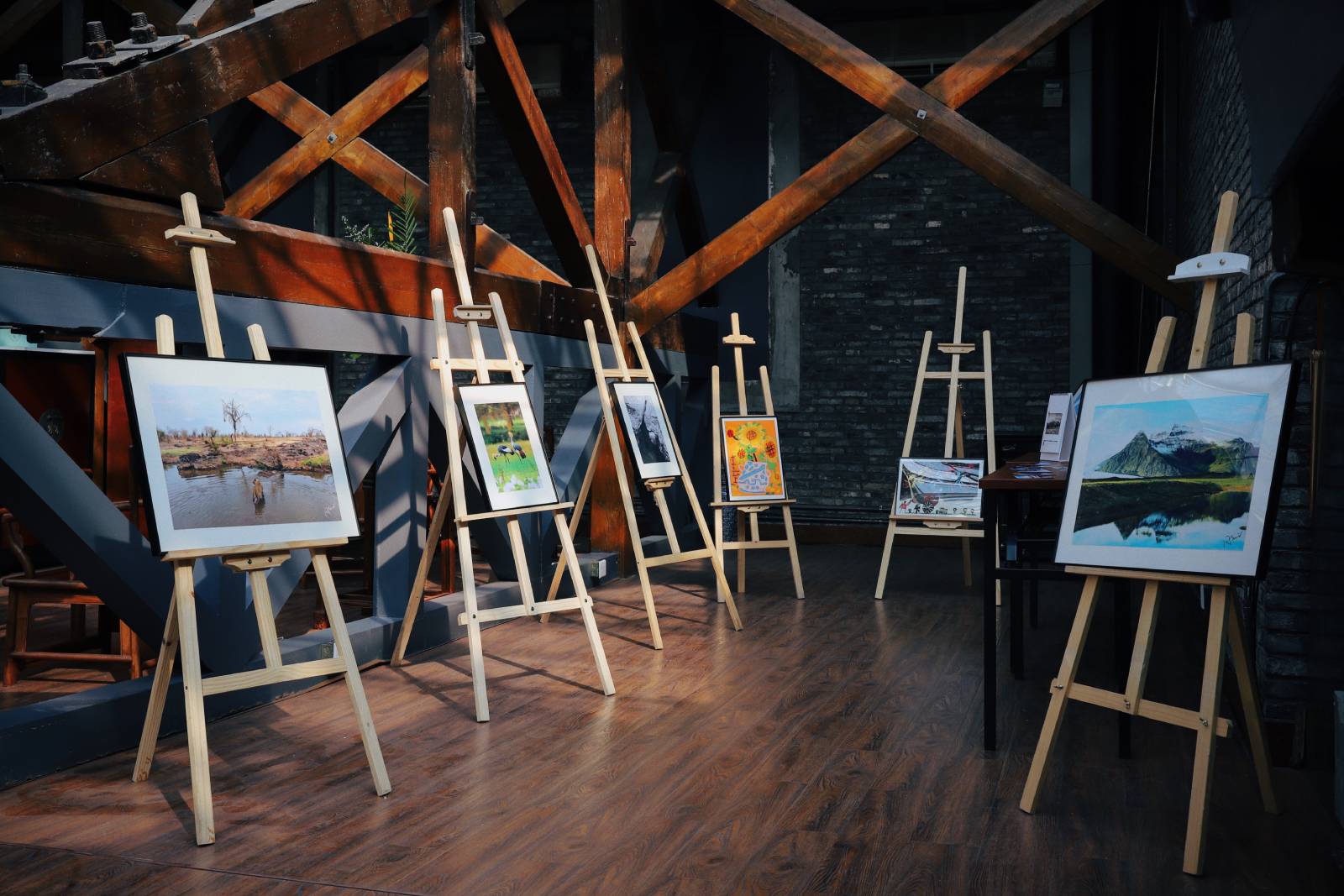Art collecting can be an invigorating, emotionally enriching, and potentially even financially rewarding hobby. However, to the uninitiated, the world of art can seem an intimidating place, filled with obscure terminology, intricate nuances, and a seemingly impenetrable elitism. Fear not, for this guide is specifically designed to lead you through the labyrinthine alleys of the art world, ensuring that you feel confident and prepared when commencing your own art collection.
Table of Contents
Understanding the Basics
What is Art?
Before we even consider purchasing a piece of art, it’s crucial to understand what we’re talking about. At its core, art is a form of human expression – a way of communicating thoughts, emotions, or perspectives on the world. From prehistoric cave paintings to contemporary digital creations, art serves as a mirror to the society that produced it, offering valuable insights into its values, conflicts, and dreams.
Why Collect Art?
Art collecting is about more than just adorning your walls with aesthetically pleasing images. It’s a deeply personal journey that invites us to connect with the emotions and ideas of others. Art can challenge our perceptions, stir our feelings, and invite us to see the world from new perspectives. For some, art collecting also holds the allure of financial investment, though it should be noted that the art market can be volatile and unpredictable, and should not be relied upon for consistent returns.
First Steps in Art Collecting
1. Educate Yourself
When beginning your journey as an art collector, it’s essential to arm yourself with knowledge. Here are a few strategies to get started:
- Study Art History: Start with some fundamental texts that outline the trajectory of art through the centuries, such as Gombrich’s “The Story of Art”. This will provide you with a solid grounding and help you understand the context within which different artworks are created.
- Explore Different Styles and Movements: Spend time researching various art movements (Impressionism, Surrealism, Abstract Expressionism, etc.) and different mediums (painting, sculpture, photography, etc.). This will help you to discern what types of art you are drawn towards.
- Visit Galleries and Museums: Immerse yourself in art by visiting galleries and museums. This will give you a chance to see a variety of artworks in person and begin to understand what moves you.
- Read Art Publications: Regularly read reputable art publications and websites. They can provide you with insights into current trends, introduce you to new artists, and help you understand the broader art market.
2. Define Your Taste
This is a highly personal and crucial part of the process. It’s all about discovering what you love and what resonates with you. Consider the following:
- Emotional Response: Above all, art should move you. It should evoke a response, whether that’s joy, discomfort, curiosity, or nostalgia.
- Personal Aesthetic: Think about what visual elements you’re drawn to. This might be particular colours, forms, subjects, or techniques.
- Conceptual Themes: You may be attracted to art that deals with specific themes or ideas, whether that’s social justice, the beauty of nature, the human form, or abstract explorations of colour and shape.
Remember, it’s not about choosing what’s popular or expensive – it’s about finding art that speaks to you.
3. Set Your Budget
Art collecting can be an expensive hobby, but it doesn’t have to be. The key is to establish a budget that you’re comfortable with. It’s better to start small and gradually increase your budget as you become more confident and knowledgeable. Keep in mind that you’ll also need to account for additional costs such as framing, insurance, and possibly restoration.
Building Your Collection
1. Start Small
It’s advisable to begin your collection with smaller, less expensive pieces. This could be prints, photographs, or works by emerging artists. This strategy allows you to develop your taste, gain confidence, and understand the buying process without a significant financial outlay.
2. Buy What You Love
This is perhaps the most essential piece of advice. Always buy art that you genuinely love. Remember, you’ll be living with these pieces, so they should bring you joy, provoke thought, and resonate with you on a deeper level.
3. Research the Artist
Before purchasing, spend some time researching the artist. Understand their background, influences, and the context of their work. This can deepen your connection with the piece and provide insight into its potential value.
4. Consider the Artwork’s Condition
Condition is a significant factor, especially when buying older works. Check for any signs of damage or previous restoration. It’s also worth noting that some mediums, like watercolour or certain types of photography, are more susceptible to damage from light and humidity.
5. Authenticate and Document
Ensure that the artwork is genuine and comes with the appropriate documentation, including a certificate of authenticity, provenance (the history of the artwork’s ownership), and any relevant exhibition history. This information is critical for insurance purposes and could be important if you decide to sell the piece in the future.
The Art of Buying
1. Galleries
Commercial galleries represent a roster of artists and typically sell their work on a commission basis. Staff at the gallery can provide valuable information about the artists and their work, helping you to make an informed decision.
2. Auctions
Art auctions can be exciting, but they can also be intimidating for the uninitiated. It’s wise to attend a few auctions as an observer before participating. Be sure to set a maximum bid before the auction to prevent getting carried away in the heat of the moment.
3. Online Platforms to Buy Art
Numerous online platforms offer a wide range of artworks at different price points. Buying art online can be a convenient way to build your collection, but it does come with its challenges, such as the inability to view the artwork in person. Be sure to buy from reputable sites and check their returns policy.
- Saatchi Art: A leading online art gallery featuring a vast selection of works from international artists. Saatchi Art caters to all types of collectors, offering artworks in a range of mediums and price points.
- Artsy: Artsy connects collectors with art from leading galleries, museums, art fairs, and auctions worldwide. Their platform also provides educational materials to help collectors learn about art.
- 1stdibs: While primarily a luxury marketplace, 1stdibs has a comprehensive fine art section. Here you’ll find a wide array of artworks from well-known artists and galleries around the world.
- Artfinder: Artfinder features original artworks from independent artists worldwide. Their platform encourages direct interaction between artists and buyers.
- Paddle8: Paddle8 is an online auction house offering contemporary art. It’s a great platform for those interested in the thrill of bidding and finding unique pieces.
- Artnet: Artnet is a leading resource for the international art market and offers an online marketplace, an auction platform, and detailed art market analysis.
- Etsy: While not a traditional art platform, Etsy is a global marketplace for unique and creative goods, including handmade, vintage, and craft items. It’s a great place to find affordable and unique pieces.
- eBay: eBay is a well-known online marketplace where you can find everything from affordable prints to valuable original artworks.
- UGallery: UGallery offers a curated selection of original artworks from emerging artists around the world. Each piece is hand-selected by their team, providing a higher level of curation than some other platforms.
- Singulart: Singulart is an online art powerhouse that connects collectors directly with artists. They provide access to a diverse range of contemporary artworks from artists around the globe.
4. Art Fairs
Art fairs are a fantastic opportunity to see a large volume of art from a variety of galleries, all in one place. They can be a great place to discover new artists and buy artwork. However, they can also be overwhelming, so it’s best to go in with a plan and not feel pressured to make on-the-spot decisions.
5. Direct From Artists
Buying directly from artists can be a rewarding way to collect. It allows you to support artists financially and build a more personal relationship with the people behind the art you love.
Caring for Your Collection
Proper care will preserve the quality and value of your artworks. This involves correct framing, hanging, lighting, climate control, and insurance. Always seek professional advice if unsure.
Conclusion
Starting your own art collection can be a fulfilling and lifelong journey. Like any journey, it’s all about taking that first step. Equipped with these tips and guidance, you’re now prepared to start building a collection that reflects your unique taste and passion for art. As you grow as a collector, remember to continually educate yourself, always buy what you love, and ensure the proper care for your artwork. Happy collecting!
Other Colour Theory Resources








